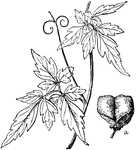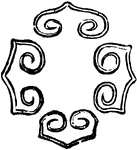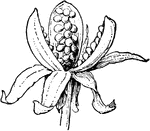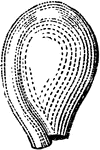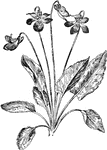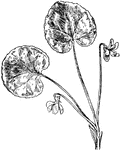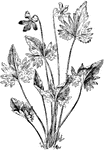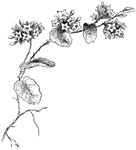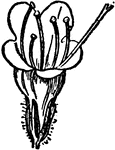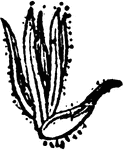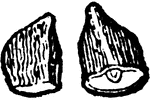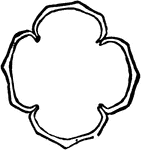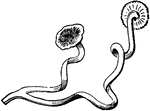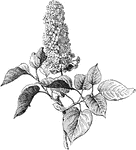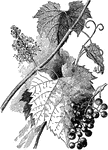234 illustrations of flowers and shrubs including: tansy, tea, thalia, thistle, tickseed tiger lily, toadflax, tobacco, tulip, utricularia, valerian, venus flytrap, verbana, vervain, vine, viola, violet, viper's bugloss, and Virginia creeper

Vine
An illustration of vine foliage and inflorescence. An inflorescence is a group or cluster of flowers…

Dog Strangling Vine
"1. flower of Cynanchum fruticulosum; 2. its pollen masses; 3. column of Glossonema Boryanum." -Lindley,…

Violet
A large genus of herbaceous plants, which are found in most parts of the glove, including about 200…
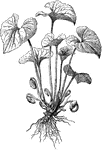
Violet
"A violet with cleistogamous flowers. The objects which look like flower-buds are cleistogamous flowers…
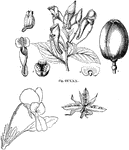
Violet
"Corynostylis Hybanthus. 1. a set of stamens, each having the connective lengthened beyond the anther,…

Dog Violet
An illustration of a dog violet plant and it's fruit. Viola canina (Heath Dog-violet or Heath Violet)…
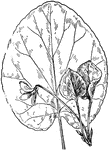
Round-Leaved Violet
Of the violet family (Violaceae), the round-leaved violet or Viola rotundifolia.

Sweet White Violet and Lance-Leaved Violet
Of the violet family (Violaceae): left, sweet white violet (Viola blanda); right, lance-leaved violet…

Viper's Bugloss Flower
Echium vulgare (Viper's Bugloss) is a species of Echium native to most of Europe, and western and central…
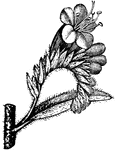
Viper's Bugloss Inflorescence
Echium vulgare (Viper's Bugloss) is a species of Echium native to most of Europe, and western and central…
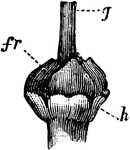
Gynaeceum of Viper's Bugloss
An illustration of the Gynaeceum of the viper's bugloss. Fr, ovary; g, base of style; h, honeyglands.
Akene of Virgin's-bower
Akene of Virgin's-bower, retaining the feathered style, which aids in dissemination.
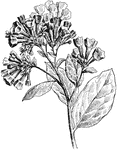
Virginian Cowslip
Virginian cowslip and bluebells are the common names of mertensia virginica. The flowers are usually…
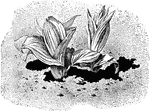
Veratrum Viride
Plant native to North America, featuring yellow leaves commonly used for medicinal purposes.
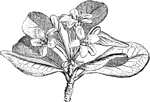
Pittosporum Viridiflorum
A greenish-yellow plant with small sweetly fragrant flowers. They are widely spread throughout the eastern…

Viviania
"Viviania crenata; 1. a flower; 2. a section of the ovary; 3. stamens and ovary." -Lindley, 1853
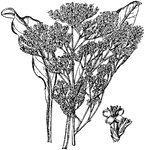
Limonium Vulgare
Plant belonging to the Limonium genus; similar to statice, marsh-rosemary and plumbago's.
Berberis Vulgaris
A shrub that is native to Europe, northwest Africa, and western Asia. It reaches up to 13 feet in height,…
